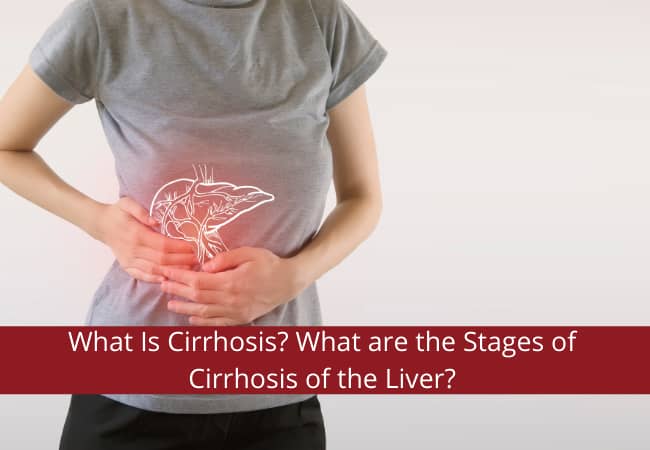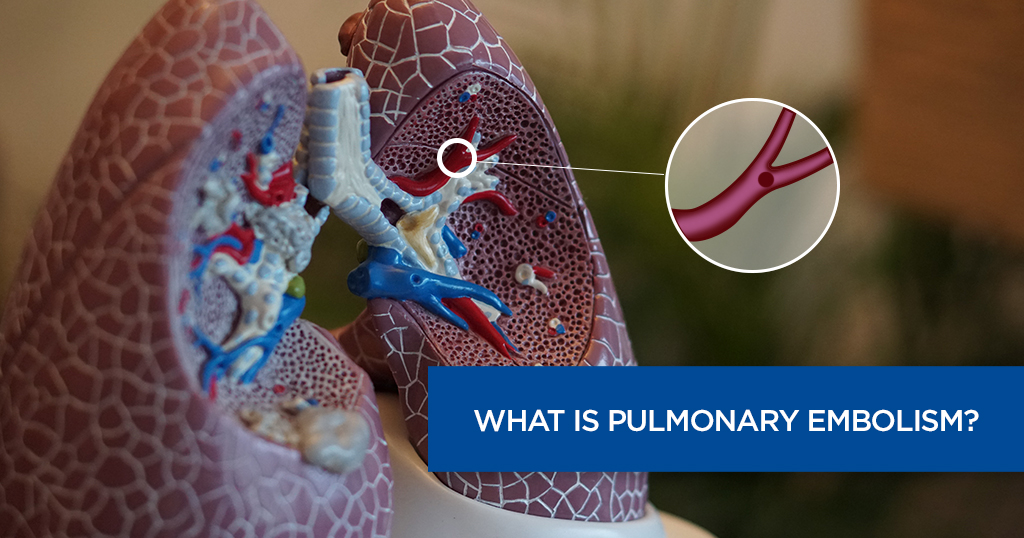What Is Cirrhosis? What are the Stages of Cirrhosis of the Liver?


complication that occurs due to several diseases in the liver most commonly hepatitis and alcoholism. When the liver gets damaged, it begins to repair itself. If the scarring of the tissues repeatedly occurs it is diagnosed as Cirrhosis.
What are the Causes of Cirrhosis?
There are several causes for cirrhosis. It is caused by different types of diseases related to the liver, like alcohol related liver disease and viral hepatitis B and C.
Mentioned below are some common causes:
- Liver disease by excessive consumption of alcohol
- NAFLD (Non-Alcoholic Fatty Liver Disease)
- Chronic viral hepatitis (A, B, and C)
- Hemochromatosis (Iron overload or buildup in the body)
- Cystic fibrosis (leading to blockage)
- Wilson’s disease (Copper buildup in liver)
- Biliary atresia (scarring and blockage in bile ducts)
- Galactosemia (galactose or sugar storage in the blood)
- Alagille syndrome (Abnormalities in bile duct)
- Primary biliary cirrhosis (auto-immune liver disease)
- Primary sclerosing cholangitis (inflammation in bile ducts)
- Liver and body infections
Rarely Cirrhosis can be caused by
- Allergic reactions to some drugs
- Prolonged toxin exposure
- Chronic heart failure
As time passes, scarring leads to improper functioning of the liver, which is proven as malignant disease. Cirrhosis is an irreversible condition, meaning it cannot be cured. But identifying its causes, gathering early prognosis, and taking effective treatments can reduce its effects.
What are the Symptoms of Cirrhosis?
Cirrhosis is a serious medical condition and it becomes important to identify its potential symptoms to get treatment. Mentioned below are the symptoms and signs of Cirrhosis:
- Appetite loss
- Bruising
- Weakness
- Jaundice (eyes and skin become yellow)
- Itching
- Fatigue
- Swelling in your feet, ankles, and legs
- Weight loss
- Confusion in memory
- A decrease in sex drive, enlargement of the breasts, or shrinking testicles (in men)
- Missing periods (in women)
It is important to note that not all these symptoms can point towards Cirrhosis. They can be due to other underlying medical issues. Though it is still advised to consult the physician if you observe any of the above-mentioned symptoms, so you can get the right diagnosis and treatment at the initial stage itself.
What are the Complications Associated with Cirrhosis?
Cirrhosis may prove to be life-threatening if its complications are not recognized and treated on time. Some of the complications are:
Portal Hypertension: It is caused because of high blood pressure produced in the veins that supplies blood to the liver. The blood flow to the liver is decreased due to cirrhosis that increases pressure in the veins, causing portal hypertension.
Legs and Abdomen Swelling: Portal hypertension results in the buildup of fluid on the abdomen (ascites) and legs (edema), which makes it a rigid area and looks like swelling. Edema and ascites make it impossible for the liver to create necessary blood proteins.
Splenomegaly: Portal hypertension also results in the expansion of the spleen, shutting down the formation of white blood cells and platelets in the liver. Practitioners look for the white blood cells and platelets while examining you for cirrhosis, as decreases in the platelets and WBCs is the first sign.
Bleeding: Sometimes the veins can burst due to extended pressure because the portal hypertension redirects the blood flow to the smaller veins, which causes serious bleeding. It can also lead to enlarged veins near the stomach or esophagus, leading to fatal bleeding. If the blood flow isn’t fixed, it can lead to continuous bleeding, which can cause other life-threatening problems.
Infection: Cirrhosis hijacks the immune system, which makes it difficult for your body to fight with the infections. Ascites can cause spontaneous bacterial peritonitis, which causes a serious infection in your body.
Malnutrition: With cirrhosis affecting your body, it becomes difficult for the liver to create essential blood nutrients that secretes through the body with blood stream. When the body is unable to process essential nutrients, it can make you malnutritious.
Hepatic Encephalopathy: This leads to toxin buildup in the brain, which can lead to mental condition as well as can make it difficult for the individual to concentrate. With time, it can become fatal, leading the patient to go into a coma or become unresponsive to any situation.
Jaundice: When liver is unable to remove bilirubin i.e. the blood waste formed inside the blood, it leads to jaundice.
Bone Disease: People diagnosed with cirrhosis sometimes are unable to get the bone strength back, which puts them at the greater risk for fractures.
Liver Cancer: Cirrhosis has led to the development of liver cancer in several patients.
Acute-on-chronic liver failure: With Cirrhosis, people experience multiple organ failure. The causes behind this are still under research.
Also Read : Liver Function Test Normal Range
Prevention
Reduce your risk of cirrhosis by taking these steps to care for your liver:
- Do not drink alcohol if you have cirrhosis. If you have liver disease, you should avoid alcohol.
- Eat a healthy diet. Choose a plant-based diet that’s full of fruits and vegetables. Select whole grains and lean sources of protein. Reduce the amount of fatty and fried foods you eat.
- Maintain a healthy weight. An excess amount of body fat can damage your liver. Talk to your doctor about a weight-loss plan if you are obese or overweight.
- Reduce your risk of hepatitis. Sharing needles and having unprotected sex can increase your risk of hepatitis B and C. Ask your doctor about hepatitis vaccinations.
What are the Stages of Liver disease?
Cirrhosis is a late-stage medical condition. Once developed, it will not be cured. However, early detection of the possible symptoms of liver inflammation can help you get a suitable treatment that can progress into cirrhosis.
In advanced cases, it can put a drastic impact over the liver, and the only treatment left for this is liver transplant.
Liver damage can lead to several stages that can significantly interrupt in the functioning of your liver.
Inflammation
It is the early stage where the liver gets inflamed or enlarged. People suffering with liver inflammation don’t experience any symptoms of cirrhosis, but if the inflammation isn’t gone in the liver there is the risk of permanent damage
Fibrosis
When liver inflammation causes scarring, it results in fibrosis. This process makes your liver unable to perform its functions, which can cause significant damage. The symptoms of Fibrosis are difficult to detect.
Cirrhosis
Severe fibrosis occurs in this stage. As there is less healthy tissue left in the liver, it becomes nearly impossible for the liver to function properly. In this stage, you might experience some of the symptoms.
End-stage liver disease (ESLD)
It displays all the possible symptoms like easy bleeding, nausea, intense itching, abdominal pain, appetite loss, swelling because of fluid buildup, memory retention problem, and many more. People with ESLD need to have a liver transplant, as this is an incurable disease.
Liver cancer is one of the major problems caused by cirrhosis, it occurs due to the formation of an extended number of unhealthy cells and tissue in the liver. Mets formation can be seen within the liver, which can be developed because of Cirrhosis.
What are some important things to consider for Cirrhosis?
Unfortunately, Cirrhosis of the liver is a fatal disease, with no cure to repair the scarred tissue at the end-stage. The life expectancy for ESLD is six months to 2 years, entirely based on the level of complication the patient is facing. If a person is diagnosed with Cirrhosis, but having no major complication, their life expectancy is considered to be more than 12 years.
What is the diagnosis of Cirrhosis in an individual?
Doctors can detect it through a physical examination using a CT scan or MRI scan.
Lab Tests
The sign of liver malfunction can be checked through the blood test. The test can also indicate the formation of certain enzymes that show liver damage. You will be checked for hepatitis viruses, and based on the blood report the doctor will check how far the damage has extended to form a proper treatment plan.
Imaging Tests
With CT and MRI scans, and even ultrasound of the abdomen, the possibility of liver disease is found. These scans are basically the part of physical examination to identify enlarged livers, inflamed spleens, unusual nodular livers, and fluid buildup in the abdomen, which indicates cirrhosis.
The tissue sample is taken for pathology to check the reason behind the scarring tissue and get the proper diagnosis. It also helps to identify the severity of the tissues formed in the liver.
Call 1860-500-1066 to book an appointment
What are the preventive measures available for Cirrhosis?
If diagnosed in the early stage, you can take some precautions like:
- Avoid consumption of alcohol or drugs.
- Consume a balanced diet to maintain proper weight
- Avoid NSAIDs (non-steroidal anti-inflammatory drugs).
- Avoid unprotected sex
- Reduce risk of hepatitis virus
- Get hepatitis vaccination
What are the treatments available for Cirrhosis?
In early cirrhosis, it may be possible to minimize damage to the liver by treating the underlying cause. The options include:
- Treatment for alcohol dependency. People with cirrhosis caused by excessive alcohol use should try to stop drinking. If stopping alcohol use is difficult, your doctor may recommend a treatment program for alcohol addiction. If you have cirrhosis, it is critical to stop drinking since any amount of alcohol is toxic to the liver.
- Weight loss. People with cirrhosis caused by nonalcoholic fatty liver disease may become healthier if they lose weight and control their blood sugar levels.
- Medications to control hepatitis. Medications may limit further damage to liver cells caused by hepatitis B or C through specific treatment of these viruses.
- Medications to control other causes and symptoms of cirrhosis. Medications may slow the progression of certain types of liver cirrhosis. For example, for people with primary biliary cirrhosis that is diagnosed early, medication may significantly delay progression to cirrhosis.
Other medications can relieve certain symptoms, such as itching, fatigue and pain. Nutritional supplements may be prescribed to counter malnutrition associated with cirrhosis and to prevent weak bones (osteoporosis).
Treatment for complications that occurs with Cirrhosis
If your doctor feels that there have been any complications of cirrhosis, he/she will suggest you with following treatment options
- Excess fluid Build-up. You will be prescribed with a diet low in sodium. Taking the medication as suggested in order to prevent from building up of the fluid inside the liver.
- Portal hypertension. Depending on the damage formed to your liver you will be given medications, so based on the prescription consume the medication to control the increase in the pressure of blood flow in the veins.
- Infections. As cirrhosis results in the infection so you will be given antibiotics to treat the infection. If you are at first stage you might be given the necessary vaccines to keep you away from the possibility of cirrhosis.
- Risk of liver cancer risk. If you are diagnosed with cirrhosis you will be called for regular blood and imaging tests to monitor any possible signs of liver cancer.
- Hepatic encephalopathy. In order to reduce the toxin build up in the brain, proper medications and periodic imaging tests are given.
- Liver Transplant: In advanced cases, where the liver stops functioning, you are set up for the liver transplant surgery.
Call 1860-500-1066 to book an appointment
Conclusion
Cirrhosis occurs due to the long-term and consistent damage to the liver, basically with the consumption of alcohol, inflammatory toxins, or chronic viral hepatitis B or C. With the early diagnosis of the disease the possibility of liver damage decreases significantly. But, if left undetected it can lead to severe outcomes.
Thus, depending on the liver inflammation or other mentioned symptoms, you should consult with your doctor for the physical examination or biopsy before the liver problem goes out of hand.
Read More: Liver Cirrhosis
© Copyright 2024. Apollo Hospitals Group. All Rights Reserved.
 +91 8069991061
Book Health Check-up
+91 8069991061
Book Health Check-up







